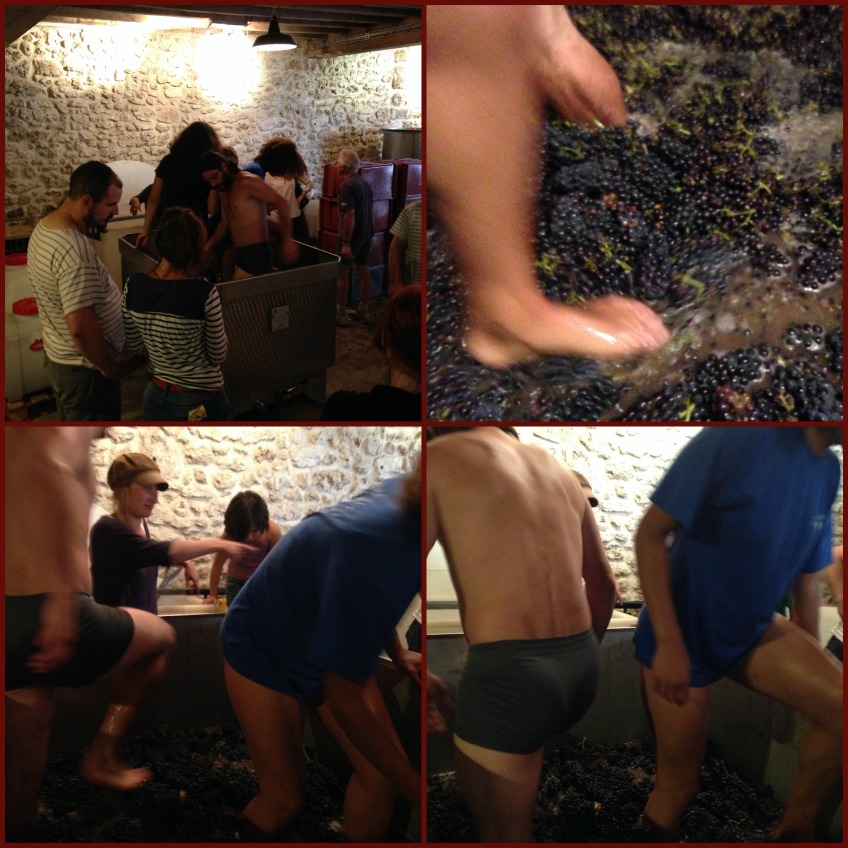The word Champagne is generally not associated with red wine, and even less with grape stomping. However, once upon a time red wine was king here. In fact it was the wine of kings as it was drunk at coronation celebrations and other important state events. When Louis the Fourteenth’s medical advisor decided the wine from Burgundy would be better for the King’s health, the Champenois started to look for alternatives and developed the production of a sparkling whitish wine. Especially at the beginning the wine was never truly white as about 70% of the grapes grown in Champagne are red grapes (Pinot Noir and Meunier). Still today these percentages hold.
With people going crazy for the ‘sparkling wine from Champagne’, Veuve Clicquot added a sparkling rosé to her portfolio as early as the end of the 19th Century. To make the pink wine she simply added a little red wine to the white wine base at time of blending. Over the years, more and more producers would follow her example. Still today, Champagne is the only region which allows the blending of white and red wine to make a rosé; in fact most of Champagne rosé is made this way.

However, some producers prefer to make a ‘rosé de saignée’ – here the rosé is made by letting the juice macerate on the skins; it is the way to make rosé anywhere else in the world. And to make this kind of rosé many (especially small) producers stomp the grapes by feet to break the berries before the maceration period. The reason this traditional method is used is that it many producers feel that stomping the grapes is gentler than using a destemmer, so less tannin will be extracted, plus it adds some romanticism to the wine. Vincent Laval, an organic producer in Cumiere makes his rosé de saignée by stomping very ripe Pinot Noir grapes in an open stainless steel vat. Benoit Lahaye, a biodynamic winegrower from Bouzy, stomps his Pinot Noir directly in his 2000kg pneumatic press. The grapes macerate overnight, and the juice is pressed off in the morning.
A last category of rosé wine which is generally stomped by feet is the Rosé de Ricey. Rosé de Ricey can only be produced from Pinot Noir in the 3 villages which make up Les Ricey. It is a small place with very steep hills at the very South of the Champagne Appellation. The Rosé de Ricey is something between a very dark rosé and a light red wine and it has been produced in the area for centuries. It is probably the closest wine to the wine of Kings still made in Champagne today. The stomping is part of the tradition and is generally done by girls in a tank. About half of the crates of Pinot Noir are put in a tank and then stomped by feet for about 30 minutes. The rest of the berries are added to the broken berries without being broken and the tank is closed. The whole berries will spontaneously combust because of the carbon in the tank which will stimulate a carbonic maceration. The maceration generally lasts just under a week. Rosé de Ricey is very rare, so often quite pricey. It is also difficult to find outside the Champagne area.
Caroline is a wine writer & wine educator and certified sommelier specialising in Champagne. She is a regular contributor of Champagne-related stories to wine-searcher-com, decanter.com, and also writes occasionally for snooth.com and palatepress.com. You can also find more of her Champagne musings on her blog (www.missinwine.com) or follow her on twitter (@carohenry). She is currently trying to raise funds to publish the first book exclusively dedicated to sustainable, organic and biodynamic terroir driven Champagnes.
Get more information about Champagne from our handy Champagne Travel Guide.
Get Your Guide!